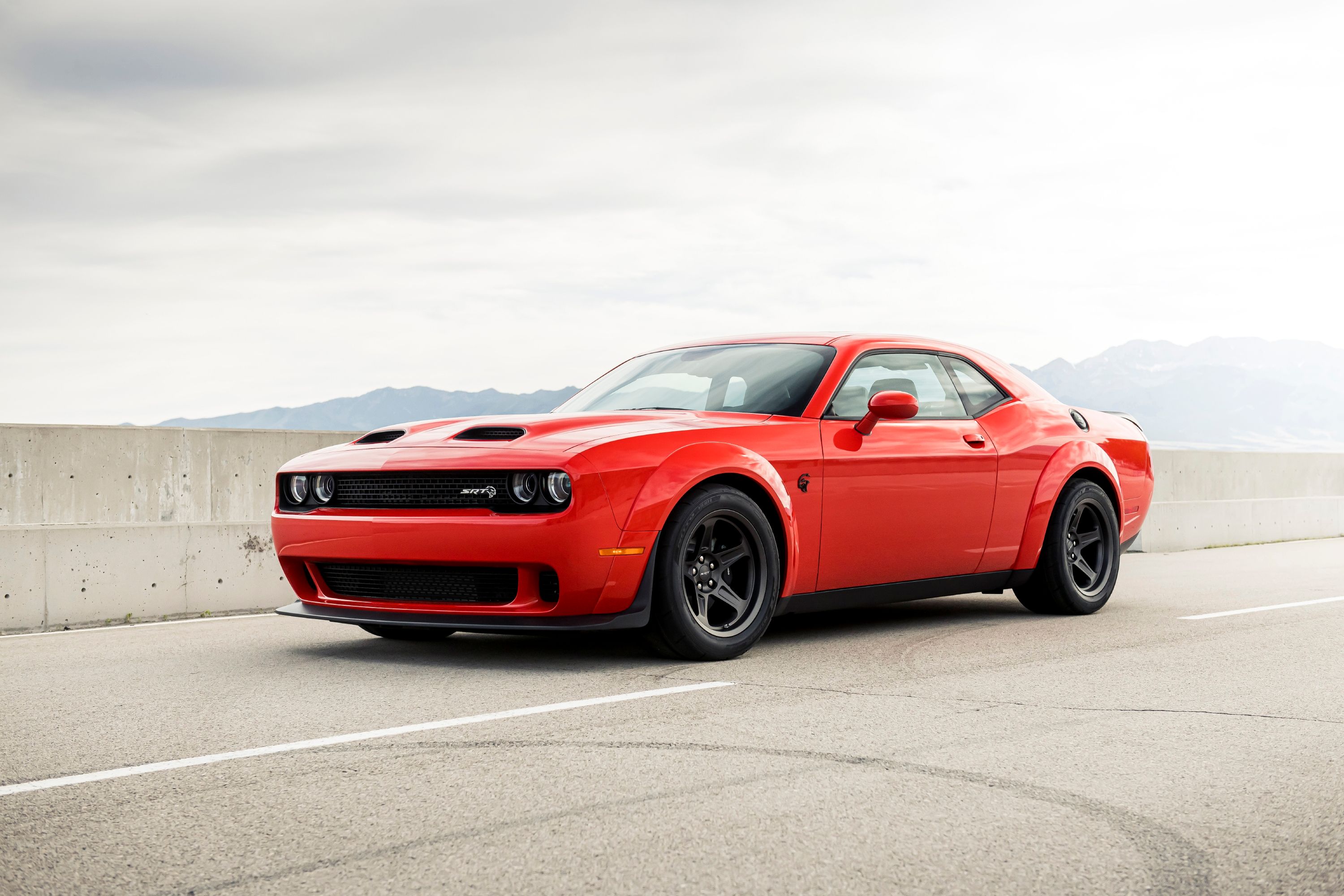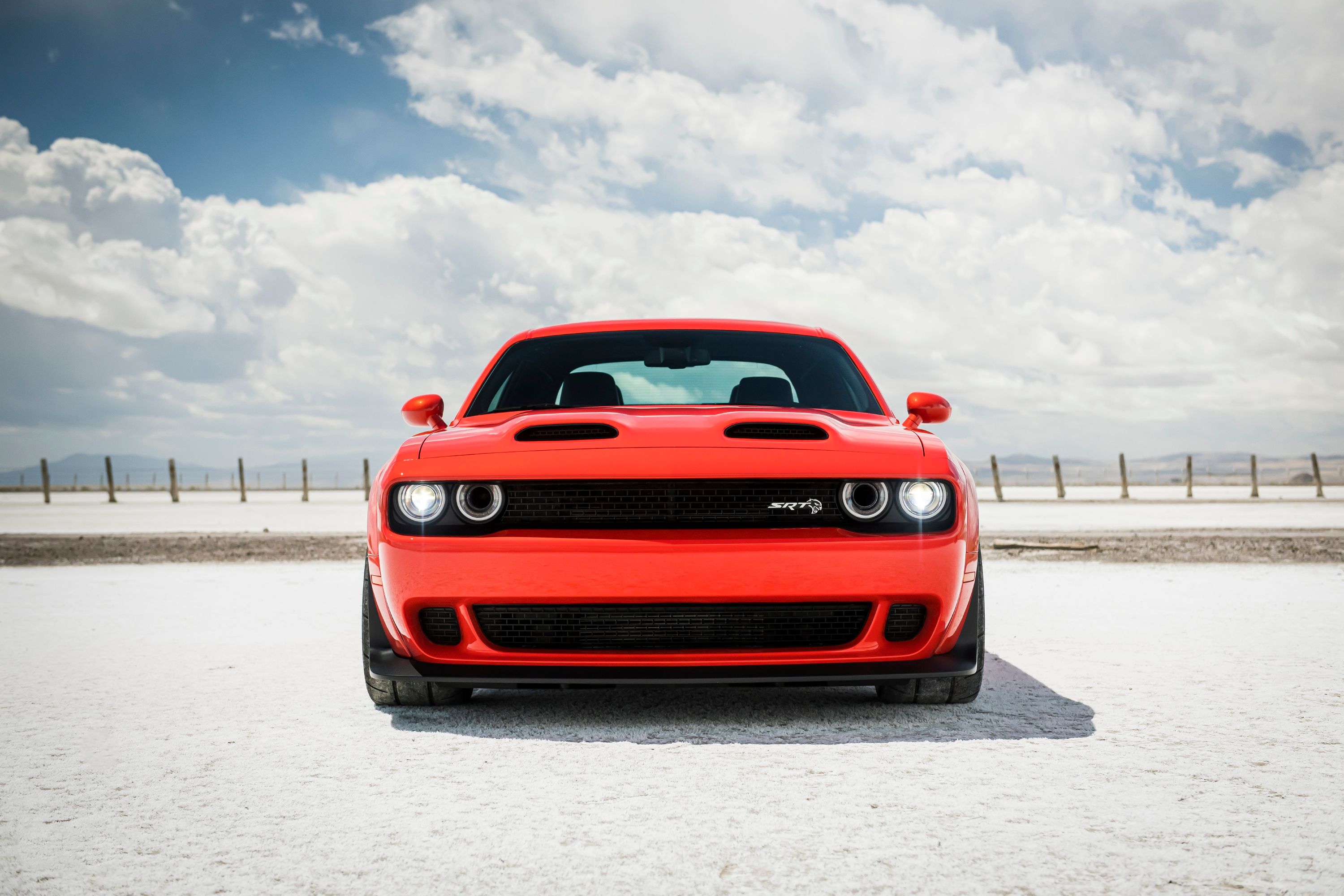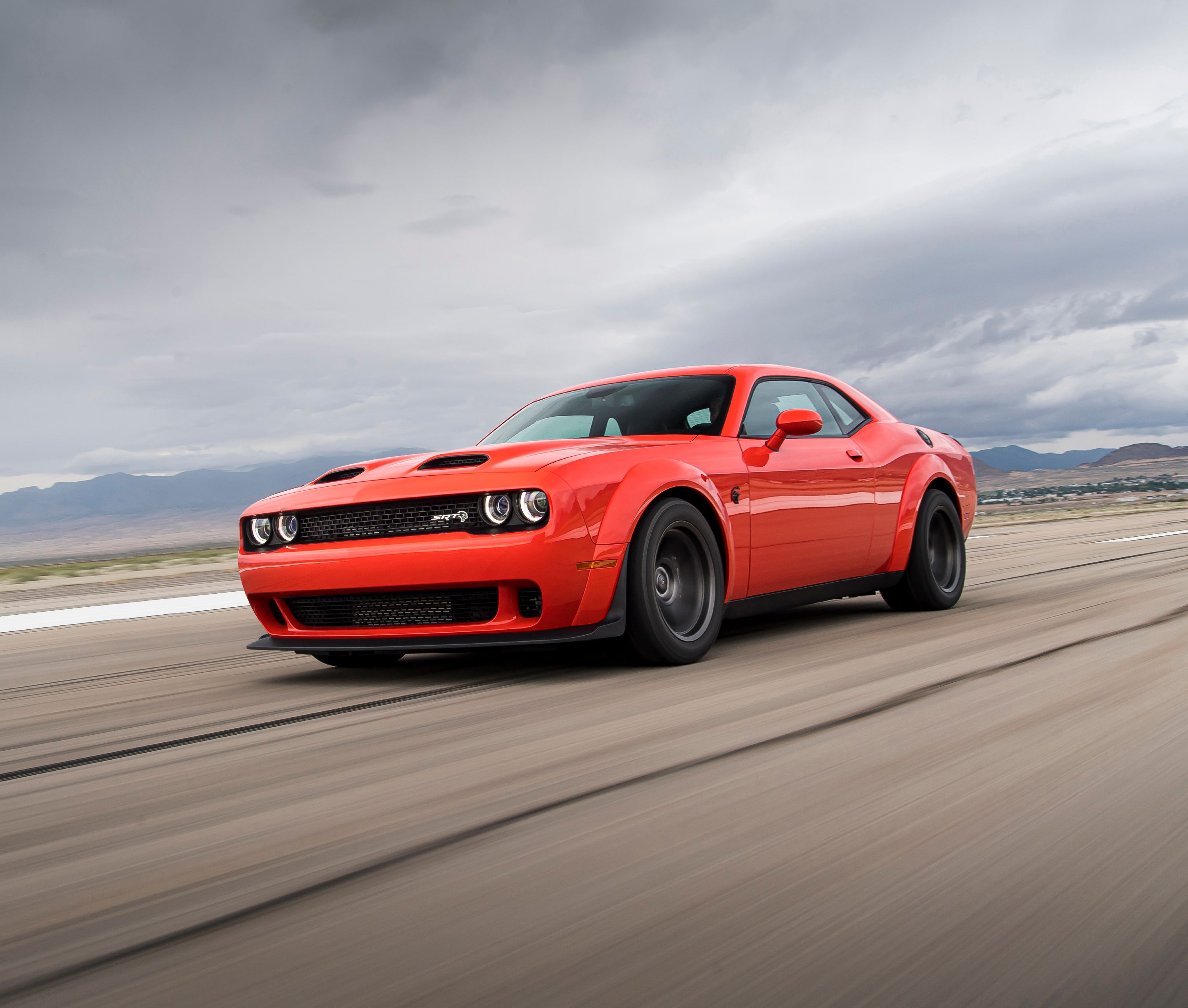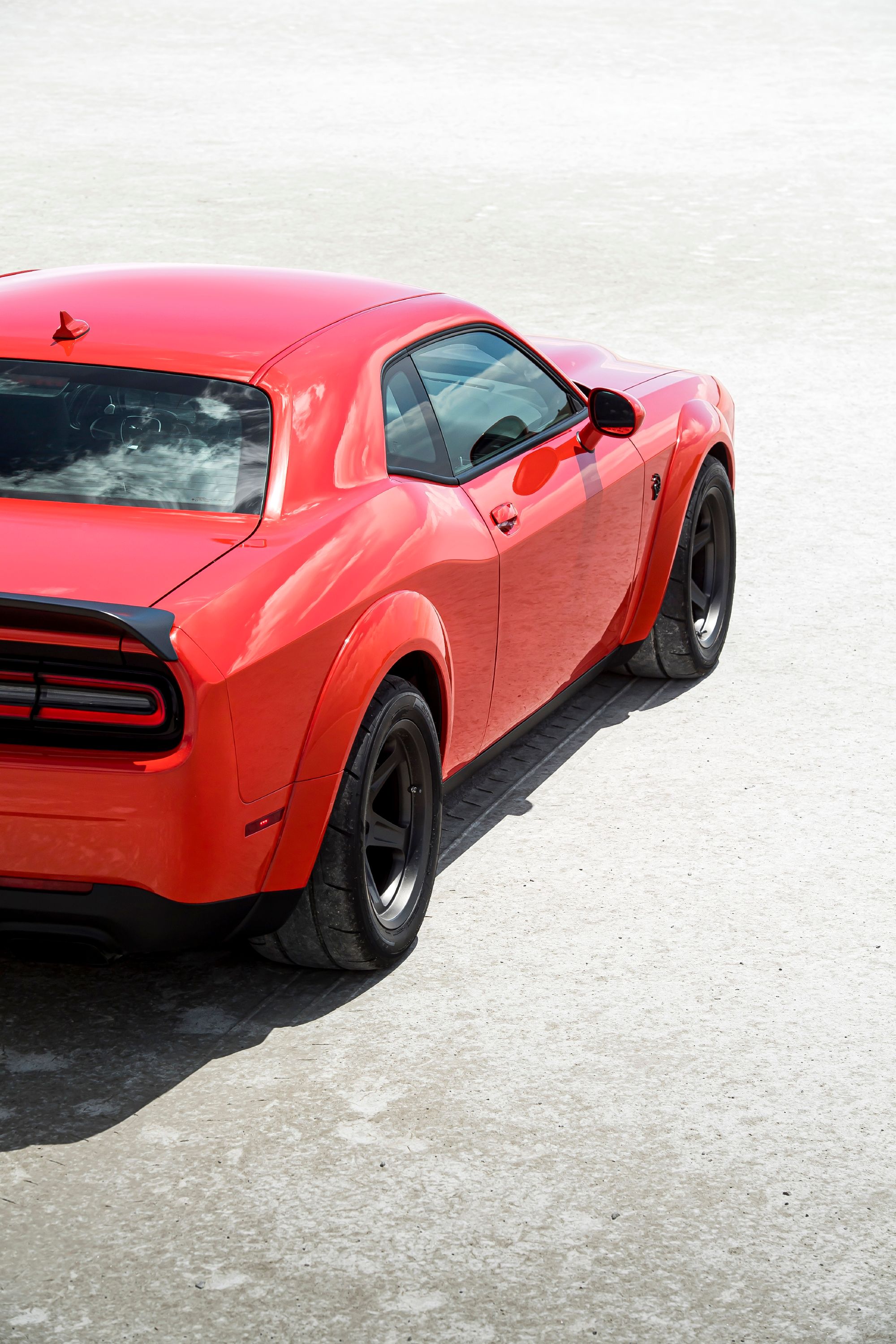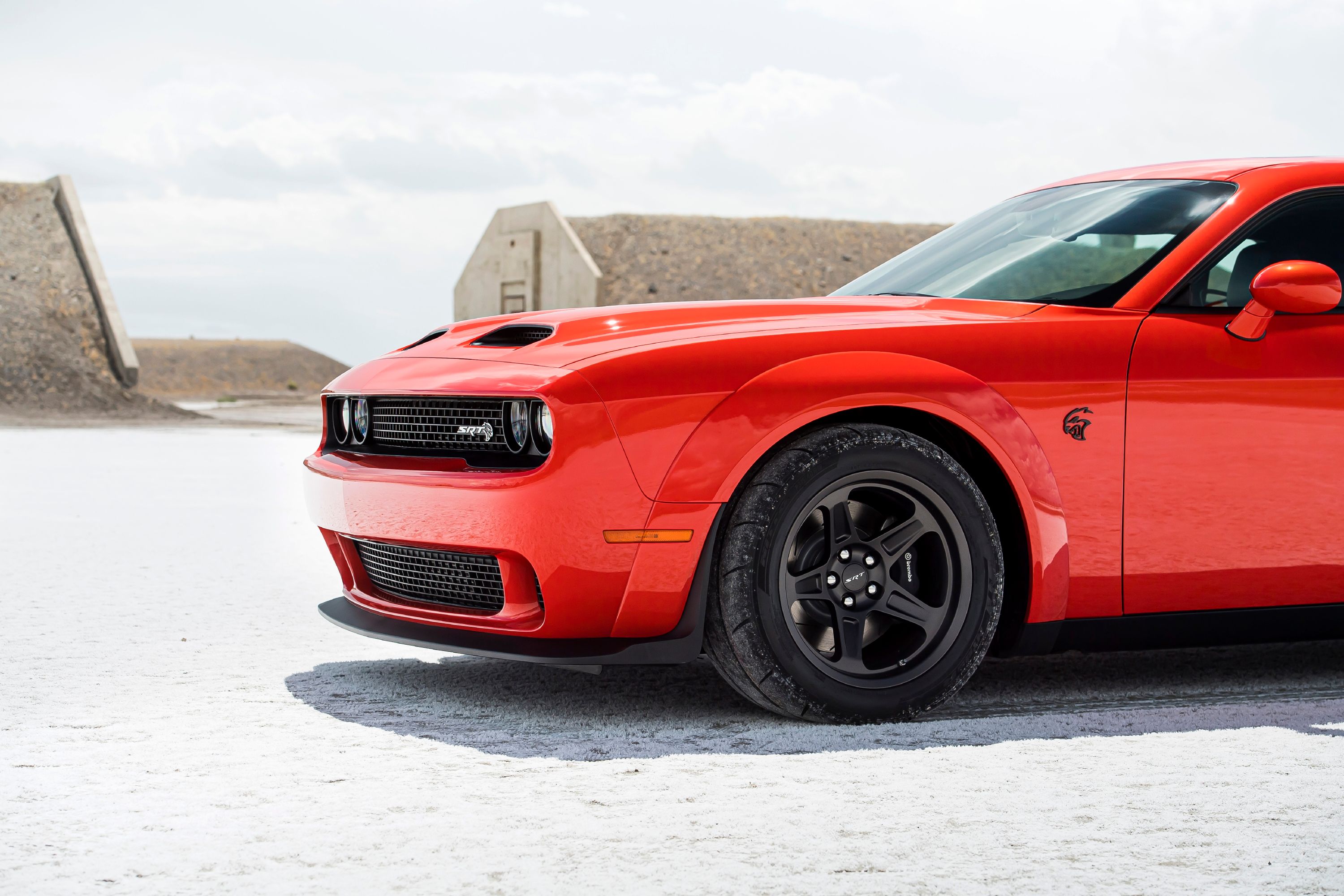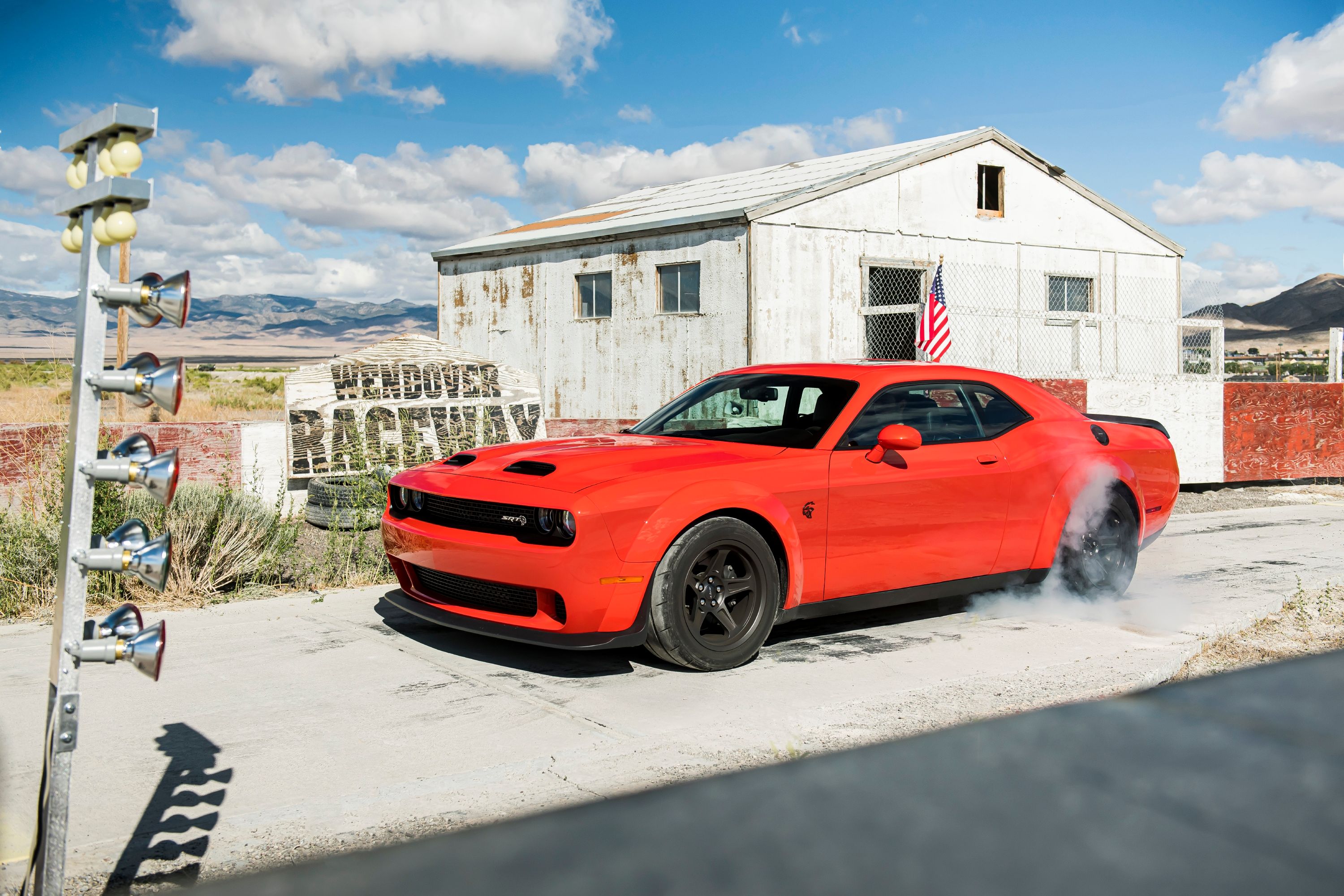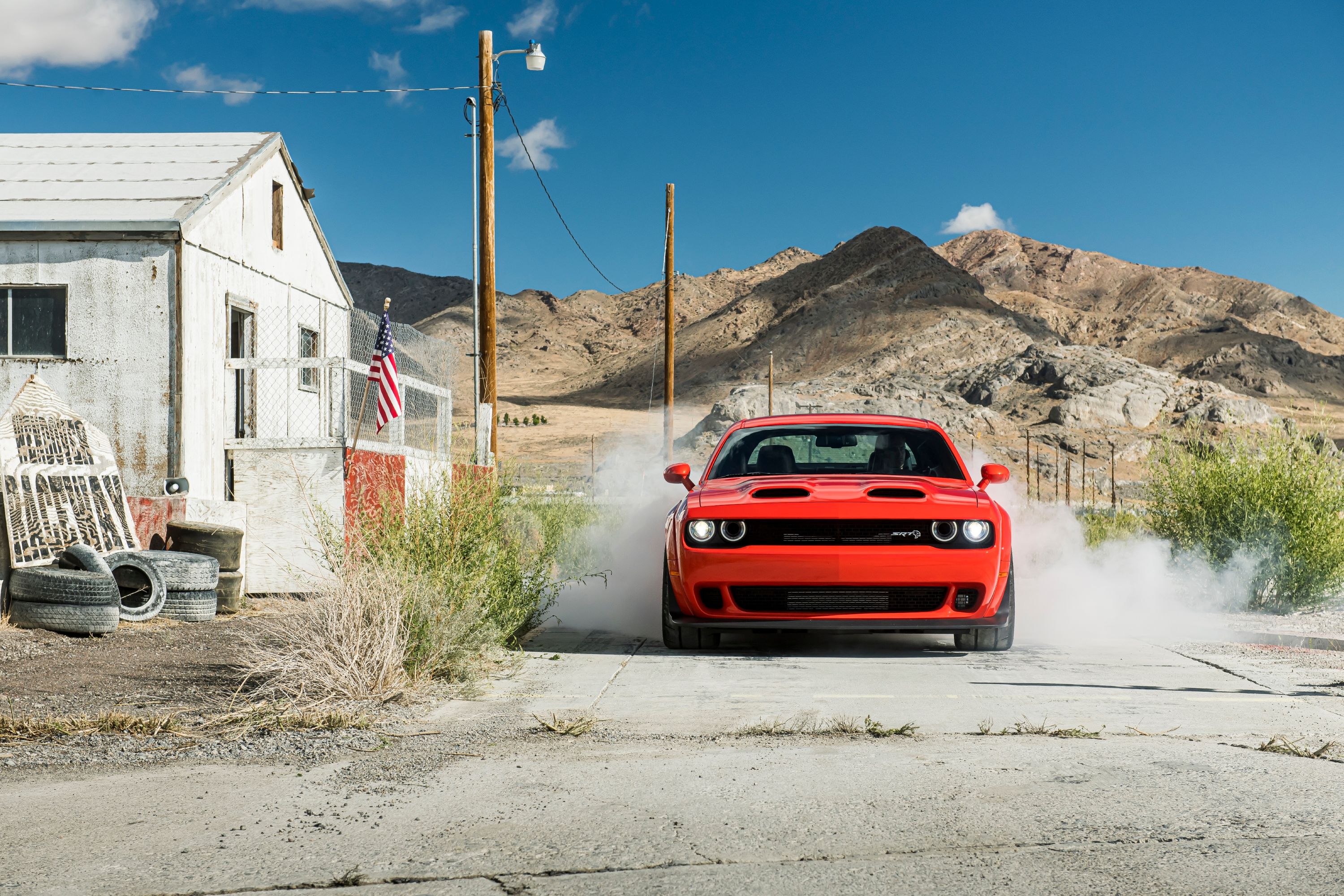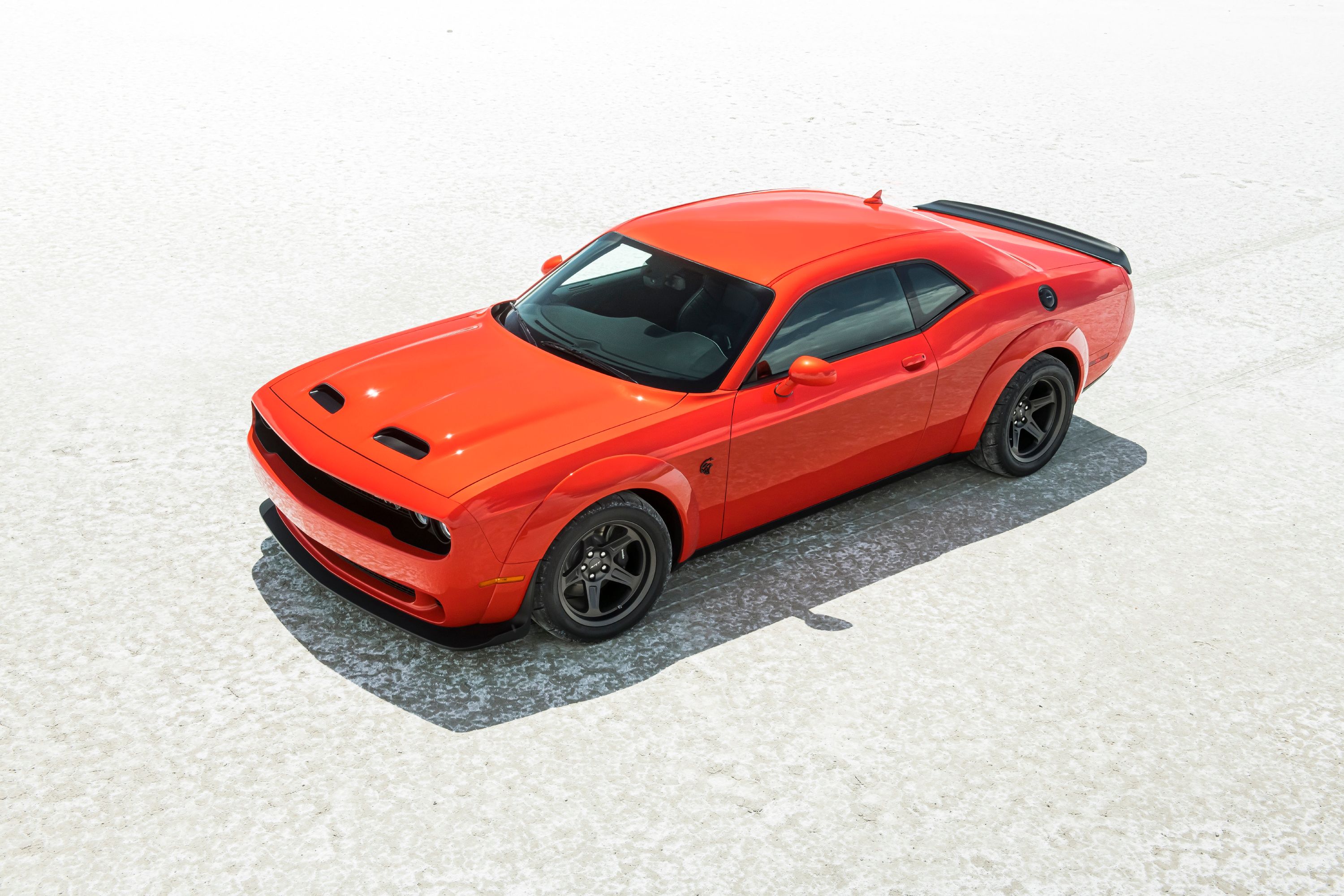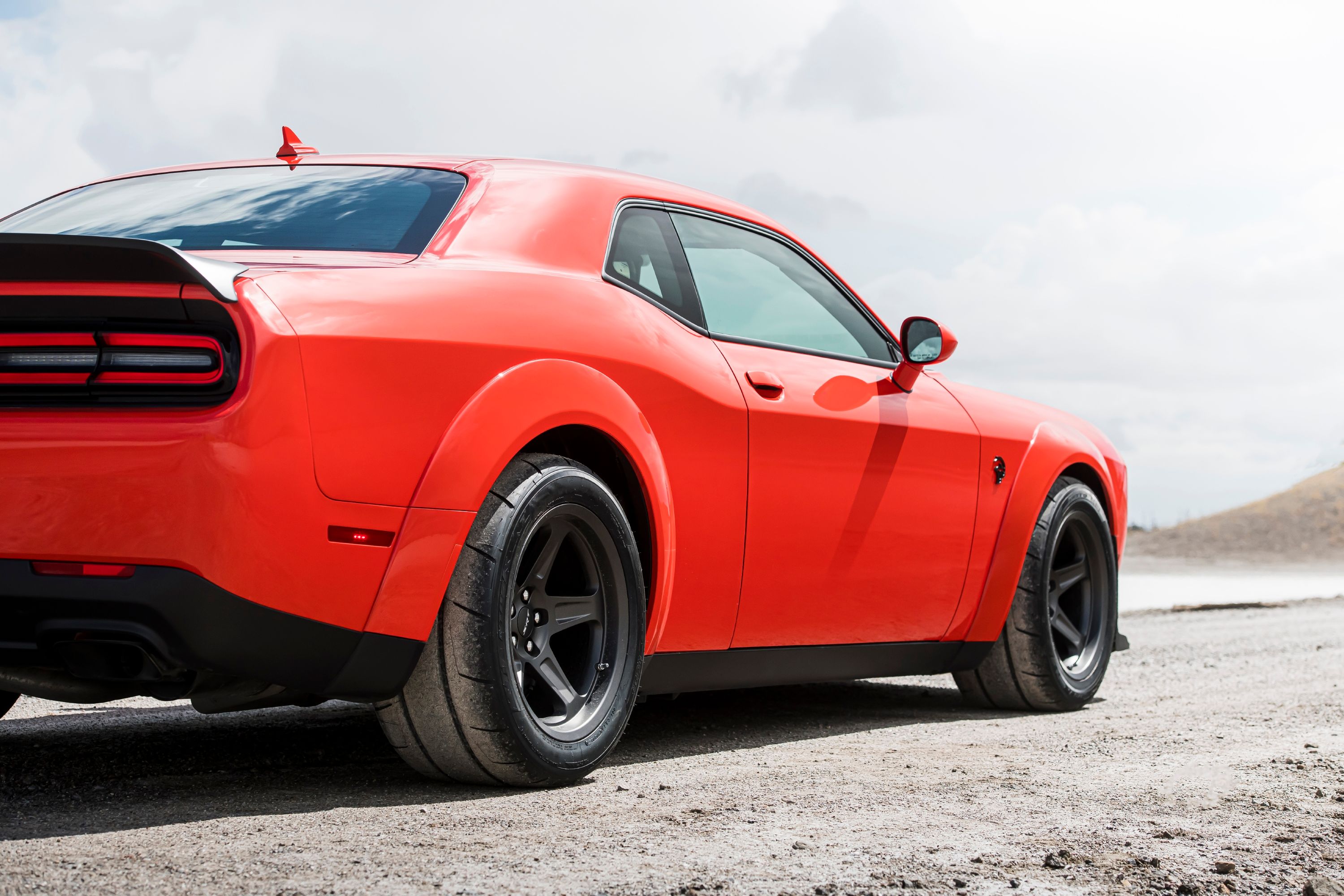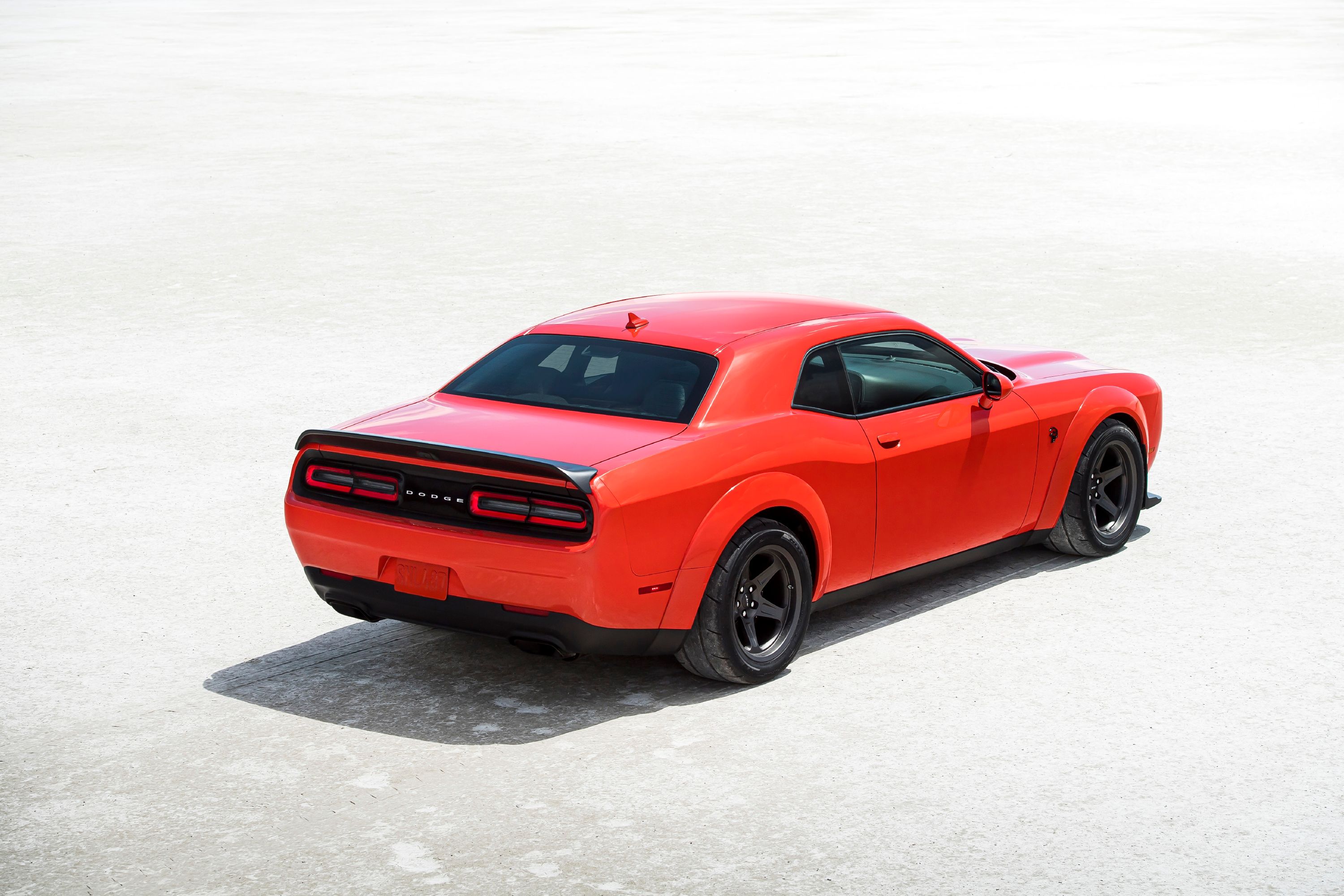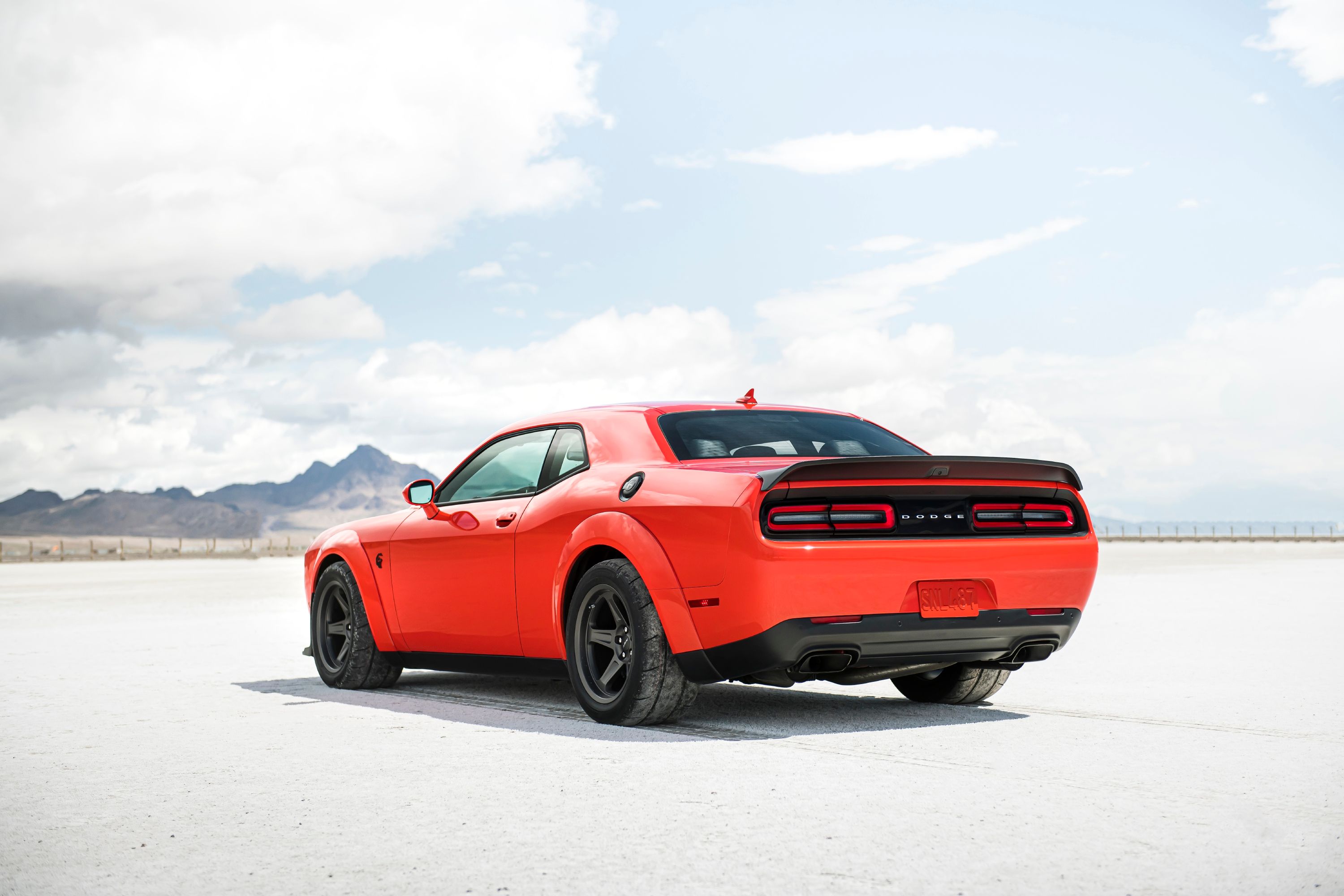Dodge’s never-ending quest to roll out the most outrageous muscle cars on the market has taken another form with the launch of the Challenger SRT Super Stock. Billed as the fastest and most powerful muscle car in the world, the Challenger SRT Super Stock once again pushes the boundaries on what’s possible with muscle cars these days. It’s fitted with a unique suspension, exclusive tires, lightweight brakes, and 6.2-liter supercharged HEMI V-8 engine that produces more power than all but one — you can guess what that “one” is — muscle car in history. With everything that Dodge used in creating the Challenger SRT Super Stock, you’d assume this muscle car to sells for a king’s ransom. Well, you assumed correctly. The Dodge Challenger SRT Super Stock comes with a starting price of $79,595, making it the second most expensive Challenger model in history next to the aforementioned “one.” The Dodge Challenger SRT Demon is still the one true king of all muscle cars, but the Challenger SRT Super Stock isn’t that far behind — in more ways than one.
What’s so special about the Dodge Challenger SRT Super Stock?
Dodge can’t quit muscle cars, can it? At the very least, it can’t seem to stop adding more variants to an already jam-packed Challenger roster. In the last two years alone, Dodge has rolled out the Challenger SRT Hellcat, SRT Hellcat Redeye, Scat Pack 1320, Widebody, and, of course, the SRT Demon. Clearly, Dodge can’t get enough of building sicko Challenger muscle cars because the Challenger SRT Super Stock is coming.
The Challenger SRT Super Stock is the ultimate muscle car. It boasts a uniquely tuned Bilstein adaptive-damping high-performance suspension system and exclusive 18-inch wheels in a Low Gloss Granite finish with a set of sticky 315/40R18 Nitto NT05R drag radial tires wrapped around the wheels. Lightweight all-aluminum four-piston brake calipers and 14.2-inch vented rotors ensure that the SRT Super Stock can stop on a dime even with all that power it’s carrying.
Speaking of power, the Challenger SRT Super Stock packs the same 6.2-liter supercharged HEMI V-8 engine as the Challenger SRT Hellcat Redeye.
That extra power makes the Challenger SRT Super Stock the most powerful production muscle car in the world, though, somewhat ironically, it’s not the most powerful Challenger in the world. That distinction still belongs to the Challenger SRT Demon.
How does the Dodge Challenger SRT Super Stock measure up against the Dodge Challenger SRT Demon?
You can tell that even with the arrival of the Dodge Challenger SRT Super Stock, Dodge remains keen on keeping the Challenger SRT Demon’s place atop the Challenger hierarchy in place. Perhaps that’s the reason why Dodge opted to use the Challenger SRT Hellcat Redeye’s engine setup in the SRT Super Stock as opposed to using the Demon’s V-8 unit. Both muscle cars are powered by the same 6.2-liter supercharged HEMI V-8 engine, though the Super Stock does come with a smaller hood intake system.
To compensate for that, Dodge recalibrated the Super Stock’s V-8 engine to produce more power than the Hellcat Redeye’s V-8. The result is an output of 807 horsepower and 707 pound-feet of torque. Torque numbers remain the same, but the Super Stock does carry a 10-horsepower advantage over the Hellcat Redeye.
Some of you might be wondering why Dodge settled for those power numbers for the Super Stock since, if it wanted to, it could squeeze more than 807 horsepower out of that supercharged HEMI V-8. This is where the Challenger SRT Demon comes into play. The super limited muscle car was trumpeted as the most insane muscle car ever built, and it seems that Dodge wants to keep that distinction for the Demon. That’s why it “settled” on 807 horsepower for the Super Stock’s supercharged HEMI V-8. It’s one fewer horsepower than what the Demon’s HEMI V-8 is capable of churning out with 91 octane fuel, though the same V-8 can produce 840 horsepower with 100 octane fuel or higher.
The mystique and aura of the Challenger SRT Demon are clear and undeniable. Dodge wants to keep it that way. If the Super Stock’s V-8 carried more power, then we might as well forget about the SRT Demon.
Check out the table below to see how both muscle cars compare to one another.
|
Model |
Horsepower |
Torque |
0 to 60 MPH |
Quarter-Mile Time |
Top Speed |
|---|---|---|---|---|---|
|
Dodge Challenger SRT Super Stock |
807 horsepower |
707 pound-feet of torque |
3.25 seconds |
10.5 seconds at 131 mph |
168 mph (tire limited) |
|
Dodge Challenger SRT Demon |
808 horsepower (91 octane fuel) / 840 horsepower (100 octane fuel or higher) |
707 pound-feet of torque |
3.2 seconds |
9.67 seconds at 140.09 mph |
168 mph (tire limited) |
How does the Dodge Challenger SRT Super Stock's price compare to the Dodge Challenger SRT Demon?
Somewhat surprisingly, the Challenger SRT Super Stock's base price isn't far off from the Challenger SRT Demon's base price.
See, the SRT Demon was limited to only 3,300 units and allocations quickly dried up, leaving a lot of would-be buyers out in the cold. Dodge replaced the SRT Demon with the SRT Hellcat Redeye, believing that it posed as a worthy successor. The Redeye is awesome, but the disparity in performance between the two models was large enough that Dodge saw an opening to add another model between the Hellcat Redeye and the Demon. That's where the Super Stock slots in. Perhaps the model is Dodge's way of giving those who got left out of the Demon another chance to own an 800-horsepower muscle car. The Demon might have the performance advantage, but the difference isn't that glaring. If you missed out on the SRT Demon, you can buy the SRT Super Stock and own 95 percent of what the Demon is capable of.
That's not a bad trade-off.

